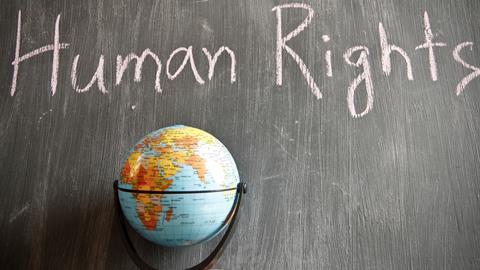The theme of this year’s UN Forum on Business and Human Rights was ‘Time to act: Governments as catalysts for business respect for human rights.’ This annual event provides a platform for the Business and Human Rights (BHR) community to share lessons in implementation of the UN Guiding Principles on Business and Human Rights (UNGPs). Widely recognised as the authoritative standards on the prevention, mitigation and remediation of negative business impacts on human rights, the UNGPs indicate that states and businesses have different but complementary roles: states are primarily responsible for ensuring the protection of human rights and are called to implement a ‘smart mix of measures’, while businesses must ensure respect for human rights in their supply chains and operations.

While many states are developing a mix of new regulatory, enforcement and other measures, a clear message of this year’s forum was that, in isolation and without effective business implementation of human rights due diligence (HRDD), state measures are insufficient. In this piece, I consider the emerging BHR regulatory and enforcement landscape; and some of the legal and organisational challenges that multinational businesses face in their efforts to implement their commitments.
States' 'mix of measures' for the protection of human rights
The rapid evolution of the global BHR regulatory landscape in recent years encompasses a mix of ‘transparency’ and ‘due diligence’ legislative initiatives at both national and regional levels. Transparency laws - including the California Transparency in Supply Chains Act, UK and Australian Modern Slavery Acts and EU Non-Financial Reporting Directive - broadly require covered entities to report on their efforts to combat the actual or potential negative impacts of their human rights activities. In contrast, due diligence laws - including the French Duty of Vigilance and the Netherlands Child Labour Due Diligence Act - require companies to actively adopt policies and practices to monitor and combat human rights risks in their operations. A plethora of further potential national-level regulatory initiatives are in the pipeline, including in Switzerland, Finland, Denmark, Canada and Hong Kong.
Further EU-level regulation may be on the horizon. At a conference run by the outgoing Finnish presidency of the EU Council last week, it became clear that the European Commission is considering a ‘mix of measures’. Some key areas of discussion include: the different options for BHR mechanisms (e.g. mandatory HRDD obligations, enhanced reporting requirements and/or amendments to corporate governance regulation), the extent to which BHR regulation might intersect with broader sustainability EU policy and regulation; and ensuring clear and workable liability provisions (e.g. based on business conduct rather than outcomes). The newly appointed Commission will be picking up the mantle on these issues.
In October 2019, the UN Inter-Governmental Working Group on Business and Human Rights debated the potential multilateral treaty regulating the activities of transnational corporations and other business enterprises. The treaty process has been contentious, the draft text remains hotly contested, and the future of the treaty is uncertain. Nevertheless, the process demonstrates a trend in the direction of increased regulation of corporate liability for human rights impacts.
Governments are, to varying degrees, also implementing other measures. Some states have begun to ramp up enforcement action. For example, in recent months, the US Customs and Border Protection (CBP) has issued a number of ‘Withhold Release Orders’ effectively preventing goods across multiple sectors that CBP considers may be affiliated with forced labour, from being imported into the US. Some states also continue to engage with sector-specific multi-stakeholder initiatives and are seeking to integrate BHR considerations into broader state (e.g. trade) policies.
Businesses face complex challenges in human rights due diligence
Under pressure to meet this patchwork of BHR standards, many businesses are grappling with a variety of difficult legal and operational challenges.
A complex myriad of regulation
Firstly, a lack of clarity about the precise expectations surrounding corporate HRDD for businesses operating in multiple jurisdictions has led to legal tensions. For example, the global movement for increased corporate transparency compels disclosure of supply chain risks and risk mitigation measures. Yet, a rising tide of litigation being brought in a variety of jurisdictions, on a range of legal grounds is often premised on the relevant company’s global policies and public commitments to respect human rights. Adding further complexities, even the baseline concept of ‘human rights’ (or the subsect of relevant human rights) is not consistently defined across national laws and laws often make reference to concepts of HRDD contained in a variety of different ‘soft law’ standards.
Operational challenges
Secondly, although many businesses are taking steps to transform their internal infrastructure to accommodate BHR considerations, these efforts are frequently siloed in a ‘sustainability’ or ‘CSR’ role. Yet BHR best practice now suggests that human rights considerations should be embedded throughout corporate architecture, drawing in legal, compliance, human resources, procurement and other functions as appropriate.
Global reach
Global value chains are now so complex that identifying and mitigating human rights risks in even the first tier or two of supply chains can be extremely difficult. Even if accurately mapped, ensuring the effective implementation of standards throughout the supply chain is challenging. For example, a global commodities company might produce thousands of goods across the globe and each product line, geography and business partner might present different risk profiles, requiring multiple tailored risk mitigation strategies. Businesses are also becoming more aware of the limits of social auditing, and grappling with ways to strengthen oversight and enforcement of their supplier standards. Further, when operating in jurisdictions in which local laws fall short of international human rights standards, businesses must make difficult operational decisions.
Changing realities
Changing human behaviours and technologies present new waves of potential and actual adverse human rights impacts that corporations are expected to anticipate and mitigate. At the Forum, panel discussions made frequent references to the variety of issues surrounding human rights impacts of the use of technology, including artificial intelligence and technology with surveillance capabilities. Integrating appropriate risk mitigation into the development and implementation of technology is key for businesses taking steps to respect human rights. The ‘greening’ of human rights as the world grapples with the impact of environmental degradation and that nexus to human rights was also a key focus of discussion.
A different kind of risk
Further, while traditional legal risk assessment focusses on the assessment and mitigation of risks to the business (in order to protect shareholder value), HRDD calls for businesses to focus on the potential and actual risks of their operations to people. The UNGPs encourage businesses to use leverage in their business relationships, which differs from typical approaches to corporate risk management. While there are thus difficulties in integrating human rights management into traditional corporate risk matrixes, addressing such risks in line with BHR best practice is likely to also mitigate operational, reputational and legal risks.
The next frontier in BHR will therefore be the continued effort to assist businesses at a very granular level in converting academic and regulatory principles into discrete and actionable practices enabling them to implement their commitments effectively across global operations.
Hannah Edmonds-Camara is an associate in the Business & Human Rights Practice at Covington & Burling LLP
































No comments yet